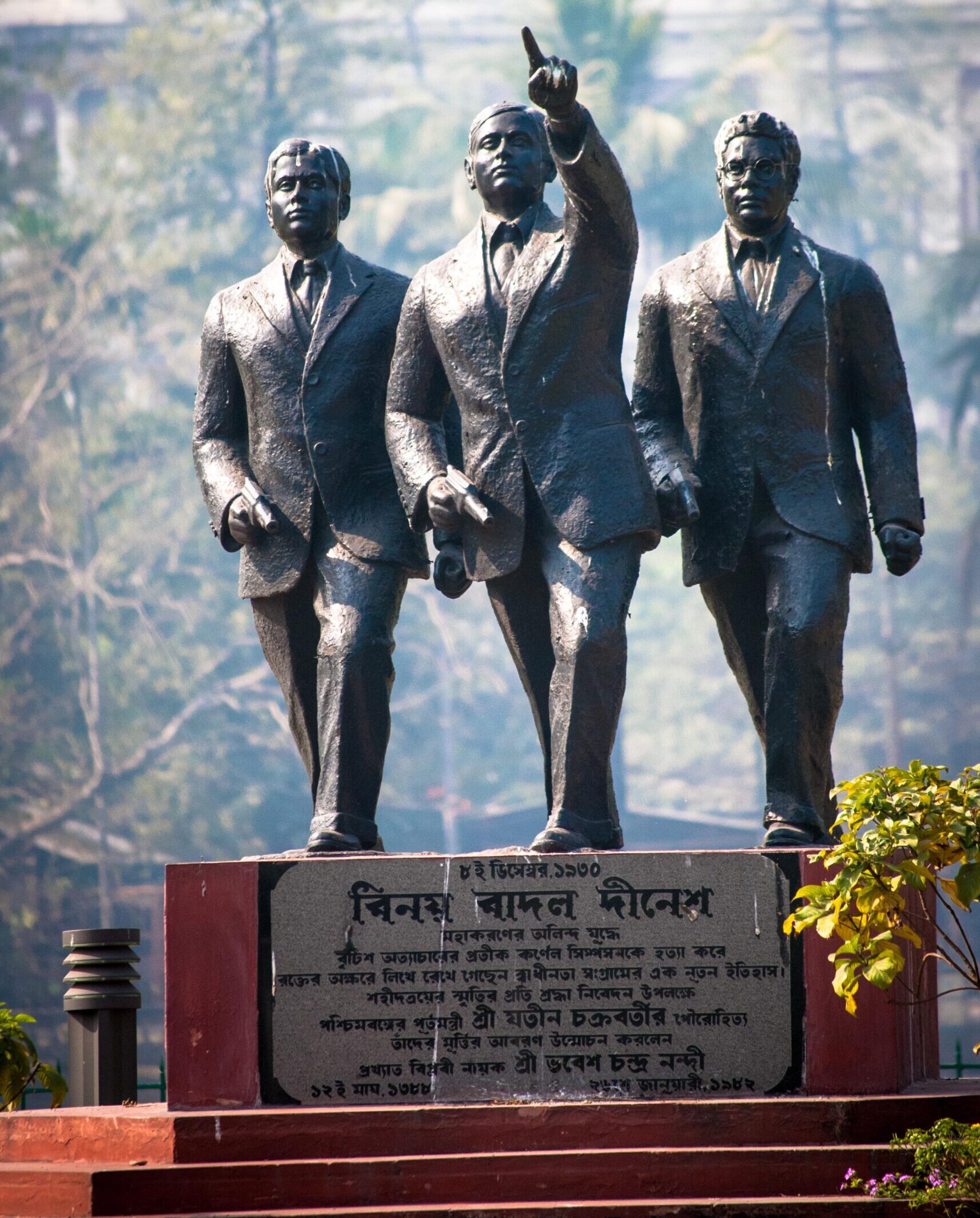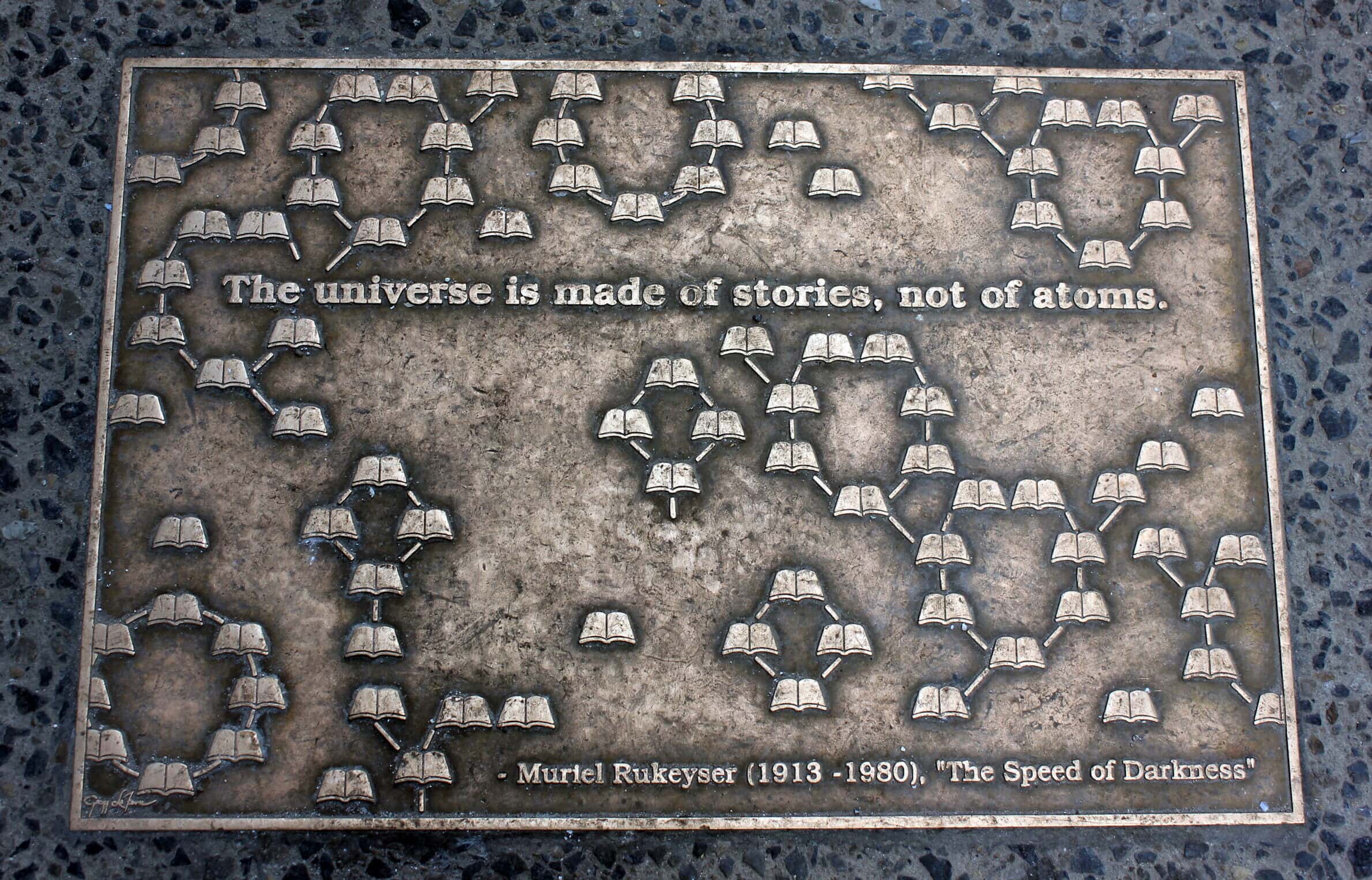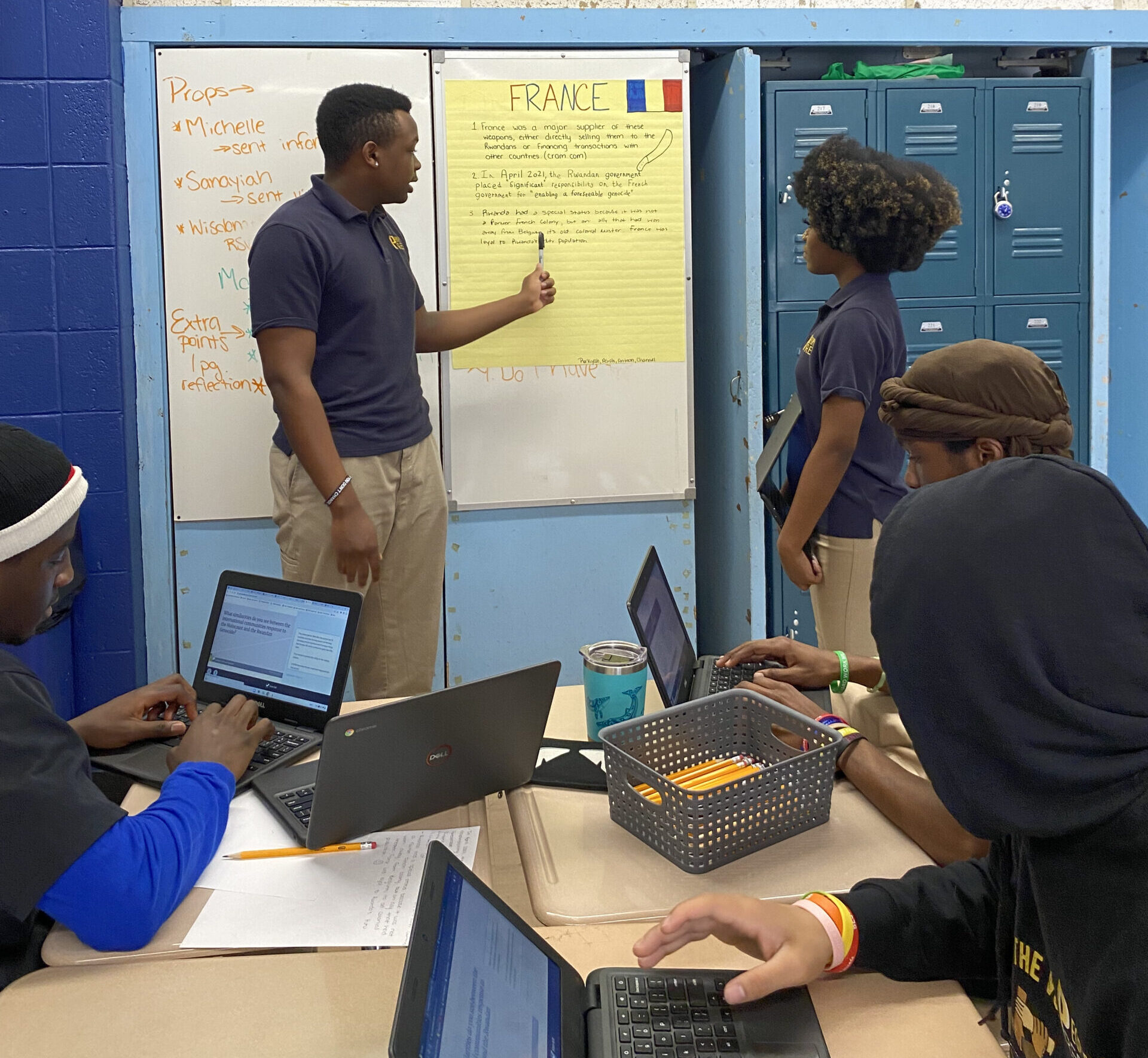The test of a first rate intelligence is the ability to hold two opposing ideas together at the same time.
—F. Scott Fitzgerald, The Crack Up (1936)
As a young teacher, some 20 years ago, I was approached at my new school by the business manager, a rather intimidating curmudgeon. “So, you’re the new history teacher,” he said. Without waiting for my reply he demanded abruptly, “Do you teach facts or ideas?” The sneering tone with which he emphasized the word “ideas” gave me a broad hint as to what he thought was the right answer. Somewhat taken aback, I replied that I taught both facts and ideas, managing (I thought) to mollify him without abandoning all my principles. Yet the dichotomy implicit in the question continues to haunt me.
Those of us who cut our pedagogical teeth on curricular approaches of the early 1970s, such as the Edwin Fenton series, were told unambiguously that “history is interpretation.” At the same time, many of us were required to usher our students through three centuries of American history, and did in fact require that students know those good old-fashioned facts and, yes, dates. Sometimes, however, given our limited classroom time, we questioned our priorities. Was it more important that students be able to recite key parliamentary legislation from 1763 to 1776 or to be aware of conflicting interpretations of the American Revolution? Yet now, as then, whether we choose to require memorization of the principal Articles of the Constitution or acquaintance with Charles Beard’s economic interpretation, we confront the dilemma of “fact versus ideas” daily. We would like to do both. But so often there isn’t enough time.
History teachers, therefore, have to “hold two opposing ideas together at the same time”: that our students need to memorize facts and chronology, an endeavor inspiring to no one; and that they need to understand and make the past meaningful by reflecting on interpretations and causation and by seeing the relationship of history to their own lives.
Complicating this dilemma is the problem of student reception. There is a Heisenberg uncertainty in teaching. We know what we think we are teaching, but what do students learn? What teacher’s heart has not sunk upon hearing a student’s plaintive cry, “Will that be on the test?” But what students retain from our courses long after exams and research papers have yellowed with age seems unknowable. Questioning students several years (or even several weeks) after a course ends can be a depressing experience. What they often say they learned seems random. “Nothing” is a brutal but not infrequent response to such questioning. Or sometimes they retain peculiarly colorful episodes, such as the execution of Mary, Queen of Scots. Rarely will we find students who will gratify us with the assertion that our course changed their lives and illuminated their understanding, or that they are planning a career as an academic historian.
Today I wish I had been able to respond to my curmudgeon’s deadly question by saying: “I teach historical thinking.” I confess I am still not exactly sure what that is, or how a teaching historian might convey it. Indeed, I am afraid it is precisely “historical thinking” that may not be communicable, at least not as one might communicate a body of knowledge. Nonetheless, I believe it is the most important process to convey to students.
How then can we construct a paradigm for teaching historical thinking? Perhaps we could perceive of it as similar to the problems parents face when they want to teach values. Rather than simply preaching, parents are usually enjoined to teach by example and to allow their children to make choices with their guidance. Can a teacher model historical thinking for students as a parent models values? We all have a “hidden” curriculum, and our students are sometimes quicker to perceive it than we are. How can we transform our “hidden” curriculum into a passion for thinking historically?
First, we might demonstrate in our teaching that we grapple with problems rather than provide preprogrammed answers. We should tackle difficult questions, and invite our students to do some of the answering. We should encourage students to theorize with us or to poke holes in a particular interpretation. Counterfactual reasoning (e.g., What if the Americans had lost the Revolutionary War?) can lead students to refine their ability to reason from the evidence and give them the sense that historical outcomes are not preordained. We should try in each class to connect small questions of fact (e.g., What was ship money?) to larger themes (e.g., Why did a conflict arise between monarch and Parliament?).
Second, we need to model the enthusiasm for the subject we hope to inspire in our students. A monotone reading of aging lecture notes or a lackluster discussion will inspire no one. We must find our own subject exciting, and we have to let our students feel that excitement. We want our students to be curious and to delve more deeply in particular areas. Are we still curious enough to do it ourselves? Teachers can model research skills by working closely with librarians to ensure that appropriate resources are available to students and that students develop the skills to find them. Current computer and CD-ROM technology have made research much easier than in the past. We need to make sure our students are aware of this technology and can use it.
Third, and most important, we should always give first place to primary source documents. However difficult or idiosyncratic, documents are the teaching historian’s most valuable ally. Documents come in infinite varieties, from the sublime to the ridiculous and from the well known to the justifiably obscure. It is impossible to read William Lloyd Garrison’s Prospectus for the Liberator without feeling his moral passion for the abolition of slavery. I recently found an extraordinary document that I give to my students: a multipage questionnaire administered to Japanese Americans just prior to their release from internment camps in 1945, asking a host of questions designed to “test” their loyalty. A facsimile collection of documents from the National Archives includes a letter to Eisenhower from two teenage girls begging him not to make Elvis go into the army, or failing that, pleading that Elvis’s hair not be cut off upon his induction. This charming and rather silly document, embellished with hearts and flowers, speaks volumes about American popular culture in the fifties. Documents speak to students directly and give them access to the fundamental materials of the historian’s craft.
Finally, we should give our students the latitude to develop their historical imaginations. Literature can be an effective tool toward this end, and there are many wonderful novels and poems that have a rightful place in history courses. Debates and role-playing are also good exercises. For example, Madame de Lafayette’s short novel, The Princess of Cleves, makes court life in 16th-century France vivid to students. Ignazio Silone’s novel, Bread and Wine, eloquently depicts rural life in Mussolini’s Italy. And the poems of Primo Levi bring students closer to the agony of the Holocaust than any textbook account. Debates sometimes lead students to make unusual historical analogies. I recently had a student who saw similarities between Louis XIV’s treatment of the Huguenots and “ethnic cleansing.” In comparing the Revocation of the Edict of Nantes to the current situation in Bosnia (not an idea I would have dreamed up!) students nonetheless posed some hard questions about the history of religious intolerance, with a number of them attacking the analogy while others defended it. Students who engaged in role playing in an Enlightenment “salon” last year still remember their characters, and some of the issues discussed might have been less immediate if they hadn’t been playing Voltaire or Catherine the Great. Such exercises inevitably have a childish ring, and often they are techniques advocated for younger students. Playfulness is possible at any age, however, and it can yield an enriched appreciation of the past, if students and teachers can be persuaded to let their guard down.
Though it may be difficult to define “thinking historically,” it is possible to identify some common stances to teaching history which will not produce “historical thinking.”
- History is not a story. It does not have a beginning, middle, and-pace Francis Fukuyama-an end. The teaching historian does not spin tales, but engages students in responding to and perceiving the past in a new light.
- History is not alien. The past is prologue. Teaching historians struggle against presentism in the classroom not only by identifying history in the making (a most lively and often poignant enterprise since 1989) but by reviving a sense of the past that is ever with us.
- History is not chronology. We do, indeed, want students to know the things we are assured-by such luminaries as Diane Ravitch and Chester Finn—they don’t know, such as when the Civil War was fought, or when the French Revolution erupted. Such factual information alone, however, yields no historical understanding; it’s one thing to know when the Civil War was fought but quite another to grasp its historical meaning.
- History is not a civics lesson. We do not teach American history simply to make good citizens. There is much to admire and much to decry in American history, and a clear-eyed view of it will make a student come to terms with difficult issues, rather than merely swell with national pride or be a better informed voter.
- History is not a morality play. It is especially important, on the eve of the 21st century, for historians to show that history is not about two polar opposites of good and evil but about intricate interrelationships of many factors, of which ideology is only one.
- History is not boring, unless teachers and textbooks make it so.
Carol Pixton teaches history at the Polytechnic School in Pasadena, California, and is a Ph.D. candidate in European history at Columbia University. She has been an Advanced Placement European History Examination reader and table leader for more than 10 years.


